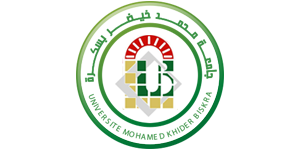Manufacture And Characterization Of Polyvinyl Chloride / Polyethylene Pvc / Pe Composites For Structural Applications
Résumé: The research initially studied a safe recycling process that decreases the accumulation of thermoplastic wastes and prevents pollution of the environment. Obtained all composites in these works were analyzed for mechanical, thermal, and morphological dynamical- mechanical and rheological characteristics. This research aims to develop a new polyvinylchloride (PVC) microcomposite that incorporates low density polyethylene (LDPE), calcium carbonate (CaCO3), and calcium/zinc stearate (CaSt2/ZnSt2). The addition of 5 phr of CaSt2: ZnSt2 = 9:1 into PVC appears to yield an optimal mechanical result and shows high thermal stability. Moreover, when a heat stabilizer rich in calcium is mixed with CaCO3 and LDPE, an excellent synergistic effect is demonstrated. The properties of polyvinyl chloride (PVC) and low density polyethylene (LDPE) blends, at three different ratios (20, 50, and 80 wt.%) of renewable LDPE were studied. Besides, Biobased composite with PVC-LDPE blend and date palm fiber as reinforcement at different loading levels (0-30 wt.%) were also investigated. The matrix in which PVC-LDPE (20 wt.%-80 wt.%) had the optimum mechanical and thermal properties. The modulus of the composites is enhanced with increasing DPLF content. Scanning electron microscopic micrographs revealed that morphological properties of fracture surfaces are following the tensile properties of these blends and composites. Thermal analysis showed that the thermal degradation of PVC-LDPE (20 wt.%/80 wt.%) blend and PVC-LDPE-DPLF (10 and 30 wt.%) composites took place in two steps: in the first step, the blend was more stable than the composites. In the second step, the composites showed slightly better stability than the PVC-LDPE (20 wt.%-80 wt.%) blend. Leaflets and rachis fibers (DPFs) were used as a sustainable reinforcement material to strengthen PVC-HDPE (20:80) biocomposites to further study the feasibility of compounding date palm fiber. As this renewable material used in this project work are crop wastes, the fibers had to be pre-treated to eliminate lignin and impurities for enhancing the interfacial adhesion between matrix and fiber, composites with untreated and treated DPFs containing 30 wt% were produced. Infrared spectroscopy (FTIR), scanning electron microscopy (SEM), and thermogravimetric analysis (TGA) have confirmed the enhancement of surface modification of DPFs from the delignification process to the extraction of cellulose microcrystals (CMCs). Furthermore, structural, morphological, thermal, mechanical, dynamic-mechanical, rheological, and water absorption all improved the biocomposites characteristic performances as a function of the modified DPFs. Hence, the PVC HDPE-HNO3F composite reveals a selective advantage to be a good potential candidate for several structural applications
Mots-clès:
Nos services universitaires et académiques
Thèses-Algérie vous propose ses divers services d’édition: mise en page, révision, correction, traduction, analyse du plagiat, ainsi que la réalisation des supports graphiques et de présentation (Slideshows).
Obtenez dès à présent et en toute facilité votre devis gratuit et une estimation de la durée de réalisation et bénéficiez d'une qualité de travail irréprochable et d'un temps de livraison imbattable!


